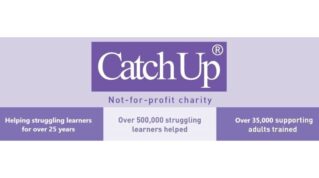The odds are you’re doing it. They’re doing it down the road too. They do it across the country. Some people don’t even know they are doing it. Some of them do it some of the time. Some of them do it all of the time. And all the while nearly everyone has their own name for it…
You need to face up to it. Whisper it if it helps. You can’t hide from it.
We really need to talk about Internal Alternative Provision…
Nurture unit, Inclusion hub, Isolation room, unit, base, bridge, an infinite number of names for Internal Alternative Provision (IAP). There are hundreds of examples of what good – and bad – looks like.-
There has been rapid growth in the number of provisions in recent years. We need a shared understanding as a profession of what effective practice looks like. Then we’ll have more children and young people in high quality internal alternative provisions. We’ll also be able to learn what works for different pupils and teachers in different places.
Here are 5 things we’ve learnt from leaders, like those from Marvell College in Hull, on The Difference’s Inclusive Leadership Course that you need to consider if you are about to launch, or already have, an IAP:
- Awareness and understanding – The Difference Inclusive Leadership Course has been working with cohorts of school leaders from Newcastle to Newquay to develop inclusive practice. When it comes to IAP geography also matters. The physical space in which the IAP is based, and how it feels, can determine the feelings of pupils while using it. Resources constraints may well impact, do the pupils in your IAP really feel part of your school or do they just happen to be on the same site?
- Normalising use of IAP – IAP often comes with stigma and misconceptions- that’s often why schools try to rebrand it with different names. By openly discussing IAP and its various forms, we can work towards normalising the different types of IAP. We can view them all as valuable components of whole-school inclusion.
- Quality and Effectiveness – How well does your provision reintegrate students back into full time mainstream learning? What qualifications are the children and young people being taught in your IAP being supported to work towards? Knowing the metrics and measurables is important to keep the provision on track. How clearly defined is the vision for your setting?
- Equity and Access – Clear admission and access criteria are needed to ensure all staff can get behind the provision, and more crucially the right pupils receive the right support, at the right time. Clarity leads to stronger outcomes and crucially reintegration.
- Collaboration and Improvement – Internally and externally. The wider staff body needs to understand the function of IAP in your setting – how can the wider team help support the provision? What will they gain in return?
Beyond your school gates, there are other schools battling the same challenges you are, with similar contexts and similar cohort demographics. Where are they? How will you find them?
The Difference’s Inclusive Leadership Course supports schools and academies across the country to develop inclusive practice, which is critical for effective and sustainable Internal Alternative Provision. The course equips leaders to better understand challenges for inclusion at a whole-school level, and to plan and deliver a response that includes impactful professional development for all staff – as well as in-person practice sharing and problem solving.
Read more or sign up to one of our free upcoming webinars on “Thinking Differently about Inclusion” here.


















Your thoughts